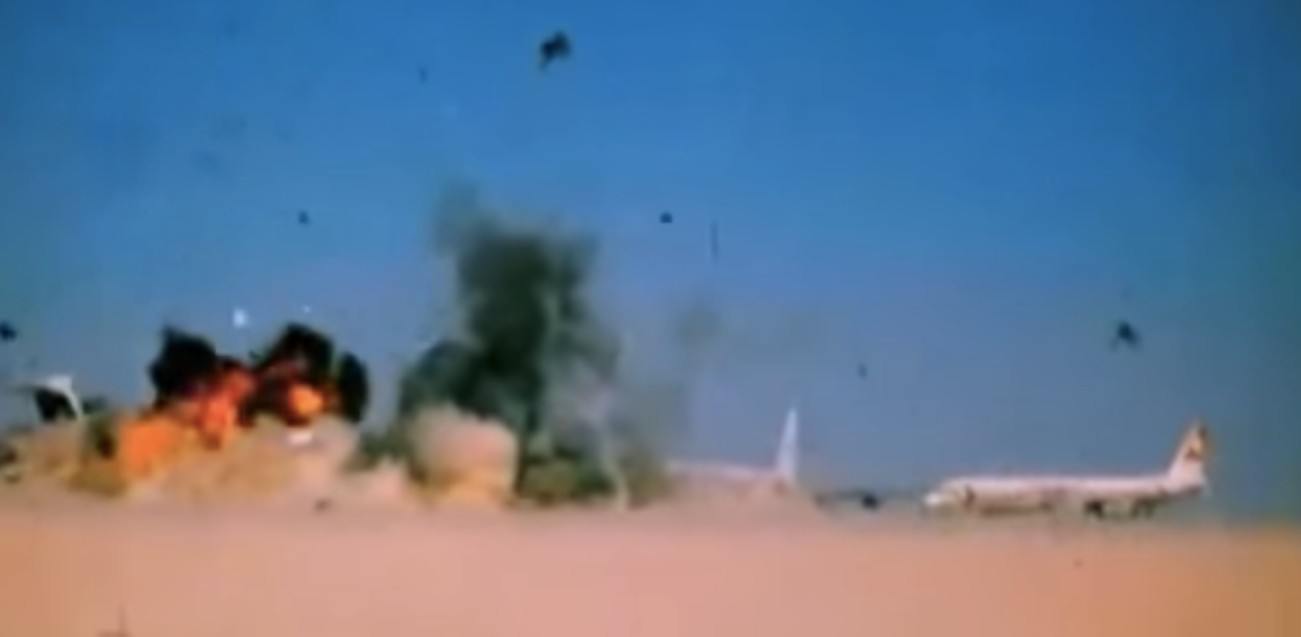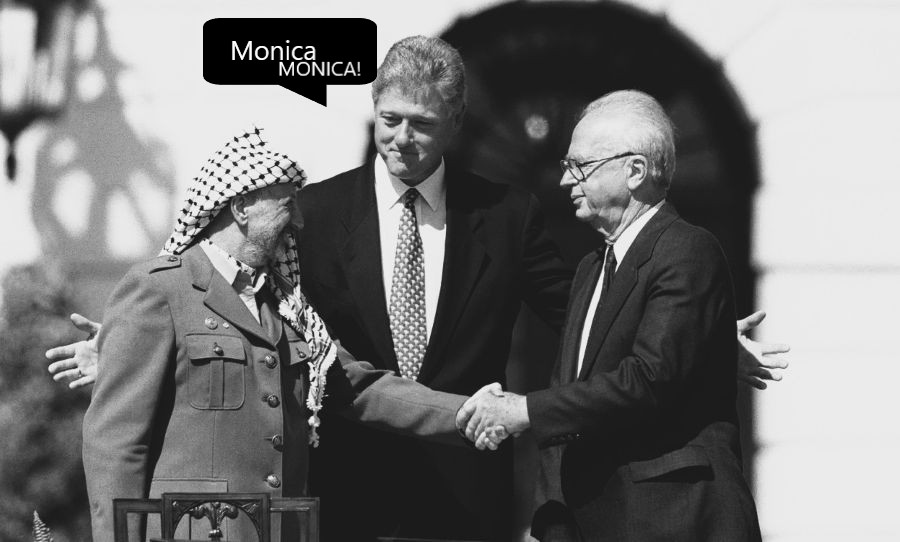Cro Magnon Battles Trilogies.
War Between Palestinian and Jordanian
The Black September conflict in 1970 is one of the most significant events in the modern history of the Middle East, marking a turning point in the relationship between Jordan and the Palestinian Liberation Organization (PLO). This violent and tragic confrontation took place primarily in Jordan, and its aftermath would reverberate across the region for decades, shaping the political dynamics of the Arab-Israeli conflict.
At its core, Black September was a struggle for power between King Hussein of Jordan and Palestinian militant factions who had established a stronghold in Jordan. The battle resulted from years of growing tensions, culminating in a brutal crackdown by Jordanian forces that led to thousands of deaths. This event not only altered the Palestinian national movement but also had deep repercussions for Jordan’s political stability and its role in the Arab world.
To understand the roots of Black September, we must go back to the aftermath of the Arab-Israeli War of 1948, which resulted in the creation of the state of Israel and the displacement of hundreds of thousands of Palestinians. Many of these refugees fled to neighboring Arab countries, including Jordan. By 1967, after another war with Israel, Jordan had lost control of the West Bank, home to a significant Palestinian population. This loss exacerbated the already delicate situation between the Jordanian monarchy and the growing number of Palestinian refugees living within Jordanian borders.
The rise of Palestinian nationalist movements in the 1960s, particularly the creation of the PLO in 1964, played a key role in the escalating tensions. The PLO, led by Yasser Arafat’s Fatah faction, sought to fight for Palestinian self-determination and the liberation of their homeland. By 1968, following their success in the Battle of Karameh—a town in Jordan where PLO fighters defended against an Israeli attack—the organization gained enormous popularity and prestige, both among Palestinians and in the broader Arab world.
With their headquarters in Jordan, the PLO rapidly grew in strength and influence, effectively establishing a state within a state. By 1970, there were tens of thousands of armed Palestinian fighters in Jordan, and many of the refugee camps had become militarized zones. This created a challenge to King Hussein’s rule. The PLO began to act with increasing autonomy, leading to a breakdown in law and order in Jordan, particularly in urban areas like Amman. Hijackings, armed clashes, and open defiance of Jordanian authority by Palestinian fighters further fueled the tensions between the two groups.
The Immediate Causes of the Conflict
By September 1970, the situation had reached a boiling point. In the first half of that year, Palestinian fighters known as fedayeen carried out several high-profile attacks, including hijacking commercial airplanes and using them as political leverage. On September 6, the Popular Front for the Liberation of Palestine (PFLP), a radical faction of the PLO, hijacked
Palestinian guerrillas in a bold coordinated action … thrust back to the world’s attention a problem diplomats have tended to shove aside in hesitant steps towards Middle East peace
Walter Cronkite, September 6, 1970
Early Afternoon
- New York-Bound Plane Hijacked
At 12:20pm local time, terrorists armed with guns and hand grenades seize TWA Flight 74, a Boeing 707 traveling from Frankfurt to New York, carrying 145 passengers and ten crew members. - Terrorists Screened
Four Palestinian terrorists are detained while boarding El Al Flight 219, a Boeing 707 departing Amsterdam for New York. Prior to its 1:20pm scheduled departure, security removes two of the group because their passport numbers are sequential. The other two militants, Leila Khaled and Patrick Arguello, board the plane. - Second Plane Hijacked
At 1:14pm local time, Palestinian terrorists seize Swissair Flight 100, a DC-8 en route from Zurich to New York, carrying 143 passengers and twelve crew members.
Mid Afternoon
- Third Plane Hijacked
At 1:45 pm local time, Leila Khaled and Patrick Arguello run towards the cockpit on El Al Flight 219, holding grenades and shouting. Pilot Uri Bar Lev puts the plane into a nose dive. In the confusion, Arguello shoots a flight steward, security guards restrain Khaled, and an air marshal mortally wounds Arguello. The hijacking has failed and the flight heads to London to land. - Terrorists Board Fourth Plane
Between 2pm and 3pm local time — after Amsterdam airport security staff fail to detect pistols and a concealed grenade — the two terrorists who had been removed from El Al Flight 219 take first-class seats on a Pan Am 747 jumbo jet, Flight 93 departing for New York.
Late Afternoon
- Hijacking of Third Plane Fails
Less than twenty minutes after the attempted hijacking, Pilot Uri Bar Lev lands the El Al Flight at Heathrow Airport in London. Police escort Leila Khaled and Patrick Arguello to a nearby hospital. Arguello dies en route and authorities arrest Leila Khaled for the attempted hijacking of El Al Flight 219. - Fourth Plane Hijacked
At 3:30pm local time, the two terrorists commandeer Pan Am Flight 93 en route from Amsterdam to New York, carrying 152 passengers and 23 crew members.
Early Evening
- First Plane Lands in Jordan
At 6:45pm local time, the first hijacked plane, TWA Flight 74, lands in Jordan at Dawson Field, a desert airstrip which the terrorists dub “Revolution Airport.” - Second Plane Lands in Jordan
At 6:55pm local time — ten minutes after TWA Flight 74 lands — the second hijacked plane, Swissair Flight 100, lands at Revolution Airport.
Late Evening
- Fourth Plane Diverted
Hijackers divert Pan Am Flight 93, the jumbo 747, from its New York route to refuel in Beirut. The pilots have convinced them that the plane is too large to land at the desert airfield in Jordan. In Beirut, nine more Palestinian terrorists board the plane and wire it with explosives before it departs at 9:35pm local time for Cairo. - Standoff With Hostages
At 11:00pm, the Jordanian army surrounds the two planes that have landed at Revolution Airport with tanks and artillery. Three hundred and ten hostages prepare for a tense night in the desert.
Negotiations and Another Hijacking
September 7-12, 1970


four planes and forced them to land at Dawson’s Field in
Jordan. The hijackings, aimed at drawing attention to the Palestinian cause, instead brought international outrage and placed enormous pressure on King Hussein to restore order in his country.
On September 16, King Hussein declared martial law and ordered his military to take decisive action against the fedayeen. His goal was to crush their growing power and restore his government’s control over Jordan. What followed was a brutal military campaign that would last for nearly a month, and it became known as Black September.
The Black September Conflict
In September 1970, Jordanian military forces, led by General Habis al-Majali, launched a major offensive against Palestinian Liberation Organization (PLO) positions in Amman and other cities. The ensuing conflict, known as Black September, was marked by intense urban warfare. Palestinian fighters, entrenched in civilian neighborhoods, offered fierce resistance to the Jordanian army, which employed tanks and heavy artillery. Despite the PLO’s tactical prowess and heavy armament, the Jordanian military’s superior organization and firepower ultimately prevailed.
The fighting was indiscriminate, with both sides accused of committing atrocities. Palestinian fighters often operated from densely populated areas, leading to civilian casualties. The Jordanian army, in its efforts to suppress the rebellion, also inflicted significant civilian casualties. Estimates of the Palestinian death toll during the conflict range from 3,000 to 5,000, though some sources suggest a higher figure.
While much of the fighting occurred in Amman, the conflict also spread to northern Jordan, where Palestinian guerrilla bases were located. In cities like Irbid and Jerash, the Jordanian army launched coordinated attacks to dismantle Palestinian military infrastructure. By the end of September, most of the PLO’s forces had been defeated, and Yasser Arafat and other leaders were forced to flee to Lebanon, where the PLO would eventually reestablish its base of operations.
We fuck the Oslo accord but in compensation he receive the nobel peace !

___________________________________-
Arafat developed the PLO into a state within the state of Jordan with its own military forces. King Hussein of Jordan, disturbed by its guerrilla attacks on Israel and other violent methods, eventually expelled the PLO from his country. Arafat sought to build a similar organisation in Lebanon, but this time was driven out by an Israeli military invasion. He kept the organization alive, however, by moving its headquarters to Tunis. He was a survivor himself, escaping death in an airplane crash, surviving any assassination attempts by Israeli intelligence agencies, and recovering from a serious stroke.
International Reactions
The Black September conflict was closely watched by the international community, particularly by Arab nations and Israel. Within the Arab world, there were deeply divided reactions to the conflict. Some, like Egypt and Syria, sympathized with the Palestinian cause and condemned King Hussein’s actions. Syrian President Hafez al-Assad went so far as to send Syrian tanks into northern Jordan to support the Palestinian fighters, but they were quickly repelled by the Jordanian military with Israeli assistance.
At the same time, Israel quietly supported Jordan during the conflict. Despite their long-standing enmity, Israeli leaders viewed the PLO as a greater threat than the Jordanian monarchy and feared that a Palestinian victory could lead to the creation of a hostile state on their eastern border. The United States and the United Kingdom also provided diplomatic and material support to King Hussein, recognizing the strategic importance of maintaining a stable Jordan in a volatile region.
The Formation of ____ September Organization
The aftermath of the conflict saw the creation of a militant Palestinian group known as Black September. This organization, formed by members of Fatah, was responsible for a series of high-profile attacks in the years that followed, including the assassination of Jordanian Prime Minister Wasfi al-Tal in 1971 and the infamous Munich massacre during the 1972 Olympic Games, where 11 Israeli athletes were killed.
Black September became a symbol of Palestinian anger and resentment over the events of 1970. The name itself reflected the deep scars left by the Jordanian military campaign, and the group’s attacks were aimed at avenging the deaths of Palestinian fighters and civilians during the conflict.
Consequences of Black September
The Black September conflict had profound consequences for Jordan, the Palestinian national movement, and the broader Middle East. For King Hussein, the victory solidified his rule and reasserted Jordan’s sovereignty, but it came at a high cost.

Thousands of Palestinians were killed, and the relationship between the Jordanian government and its Palestinian population was severely damaged, leading to decades of mistrust and resentment.
For the PLO, the loss in Jordan was a significant setback, forcing the organization to relocate to Lebanon, where it would become embroiled in the Lebanese Civil War. The events of Black September also hardened the resolve of Palestinian militants, leading to a wave of international terrorism and a new phase in the Israeli-Palestinian conflict.
The Black September conflict remains one of the most controversial and tragic chapters in the history of the Middle East. It was a battle for control, identity, and power, with deep-rooted causes that stemmed from decades of political instability and national struggles. Its legacy continues to shape the region, influencing the policies of both Jordan and Palestinian factions. Ultimately, the events of Black September underscore the complexity and volatility of Middle Eastern politics and the enduring consequences of war.
Cro-Magnon Battles Trilogies

Peace Process Failed
We fuck the Oslo accord but in compensation he receive the nobel peace !
The peace rally in Tel Aviv. Jewish extremist and the Oslo Accords.



